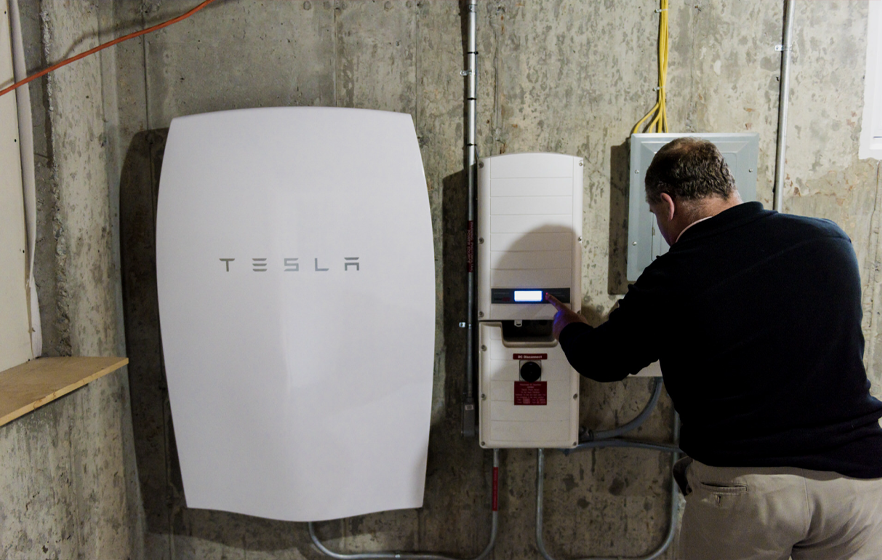
This guide offers businesses an overview of the federal investment tax credit for residential solar photovoltaics (PV). Please note that this document shouldn't be used as your primary source when making decisions like purchasing or investing, as it is subject to change based on new guidance from the Treasury Department.
What is a tax credit?
A tax credit works by reducing the amount of income taxes you owe dollar-for-dollar. So, if you qualify for a $1,000 federal tax credit, that means your federal income taxes due would be reduced by $1,000. This type of tax credit is sometimes called an Investment Tax Credit, or ITC. Just FYI: this is different from the ITC offered to businesses solar system owners.
What is the federal solar tax credit?
The federal residential solar energy credit is a tax credit that can be claimed on federal income taxes for a percentage of the cost of a solar PV system paid for by the taxpayer. (Other types of renewable energy are also eligible for similar credits but are beyond the scope of this guidance.)The installation of the system must be complete during the tax year.
If you install a solar PV system in 2020 or 2021, you're eligible for a 26% tax credit. According to the ITC extension passed by Congress in August of 2022, this percentage will rise to 30% for systems installed between 2022 and 2032 (a measure which also applies to systems installed prior to December 2019). However, it should be noted that beginning in 2033, the credit decreases again26%, and then finally 22% for systems installed in2034. This tax credit expires starting from 2025 onwards unless it is renewed by congress. What's more, there's no maximum amount that can be claimed through this method.
Am I eligible to claim the federal solar tax credit?
You might be eligible for this tax credit if you meet the following criteria:
- Your solar PV system was installed between January 1, 2017, and December 31, 2034.
- The solar PV system is located at a residence of yours in the United States
You own the solar PV system (i.e., you purchased it with cash or through financing but you are neither leasing the system nor nor paying a solar company to purchase the electricity generated by the system). Or, you purchased an interest in an off-site community solar project
If the electricity generated is credited against, and does not exceed, your home’s electricity consumption.Notes: The taxpayer may claim a tax credit for purchasing an interest in an off-site community solar project according to the IRS statement (see link above).
However, this document, known as a private letter ruling or PLR, may not be relied on as precedent by other taxpayers. Also, you would not qualify if you only purchase the electricity from a community solar project. The solar PV system is new or being used for the first time. The credit can only be claimed on the “original installation” of the solar equipment.
What expenses are included?
The following expenses are included:
- Solar PV panels or PV cells (including those used to power an attic fan, but not the fan itself)
- Contractor labor costs for onsite preparation, assembly, or original installation, including permitting fees, inspection costs, and developer fees
- Balance-of-system equipment, including wiring, inverters, and mounting equipment.
- Energy storage devices that have a capacity rating of 3 kilowatt-hours (kWh) or greater (for systems installed after December 31, 2022). If the storage is installed in a subsequent tax year to when the solar energy system is installed it is still eligible, however, the energy storage devices are still subject to the installation date requirements
- Note: A private letter ruling may not be relied on as precedent by other taxpayers.
- Sales taxes on eligible expenses
How do other incentives I receive affect the federal tax credit?
For current information on incentives, including incentive-specific contact information, visit the Database of State Incentives for Renewables and Efficiency website
REBATE FROM MY ELECTRIC UTILITY TO INSTALL SOLAR

Under most circumstances, subsidies provided by your utility to you to install a solar PV system are excluded from income taxes through an exemption in federal law. When this is the case, the utility rebate for installing solar is subtracted from your system costs before you calculate your tax credit. For example, if your solar PV system installed in 2022 cost $18,000, and your utility gave you a one-time rebate of $1,000 for installing the system, your tax credit would be calculated as follows:
($18,000 - $1,000) * 0.30 = $5,100
PAYMENT FOR RENEWABLE ENERGY CERTIFICATES
When your utility, or other buyer, gives you cash or an incentive in exchange for renewable energy certificates or other environmental attributes of the electricity generated (either upfront or over time), the payment likely will be considered taxable income. If that is the case, the payment will increase your gross income, but it will not reduce the federal solar tax credit. Note: A private letter ruling may not be relied on as precedent by other taxpayers.
REBATE FROM MY STATE GOVERNMENT
Unlike utility rebates, rebates from state governments generally do not reduce your federal tax credit. For example, if your solar PV system was installed in 2022, installation costs totaled $18,000, and your state government gave you a one-time rebate of $1,000 for installing the system, your federal tax credit would be calculated as follows:
$18,000 * 0.30 = $5,400
STATE TAX CREDIT
Although state and federal tax credits for solar PV installations are independent of each other, your taxable income on your federal taxes may be higher than anticipated if you received a state tax credit. This is because you can now deduct less state income tax from your overall taxes. (The Tax Cuts and Jobs Act of 2017 placed a $10,000 limit on the deduction for state and local taxes (SALT) through 2025.)
Consequently, if a homeowner pays more than $10,000 in SALT after claiming a state tax credit, the federal government won't reduce the value of the state tax credit due to its own taxation limit on SALT. In other words: when you claim a state tax credit, The amount of thatcredit is subject to federal taxes.
How do I claim the federal solar tax credit?
After seeking professional tax advice and ensuring you are eligible for the credit, you can complete and attach IRS Form 5695 to your federal tax return (Form 1040 or Form 1040NR). Instructions on filling out the form are available here
Where can I find more information?
ASK QUESTIONS
Internal Revenue Service (IRS), 1111 Constitution Avenue, N.W., Washington, D.C. 20224, (800) 829-1040.
Conclusion
The federal solar tax credit is a 30% tax credit off of the total installed cost of a solar energy system. This incentive is available for both residential and commercial systems, and there is no cap on the amount of credit that can be claimed. The only requirement for claiming the tax credit is that the system be installed by December 31, 2022. You can claim this tax credit by filling out IRS Form 5695 and attaching it to your federal income tax return. For more information, you can contact the Internal Revenue Service (IRS) or visit their website.

